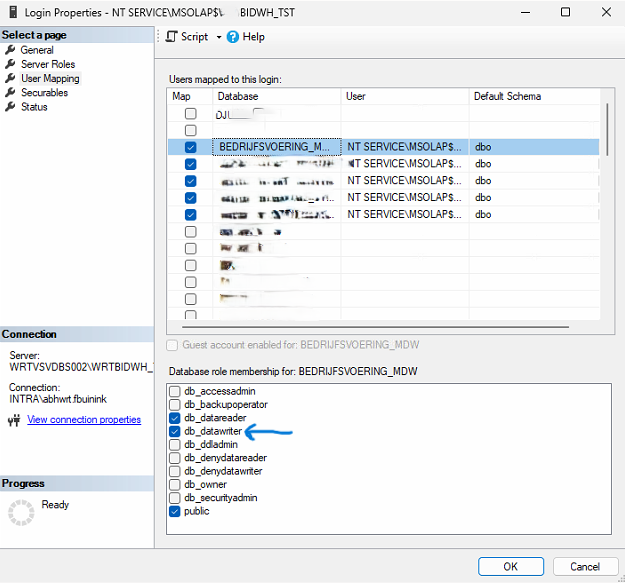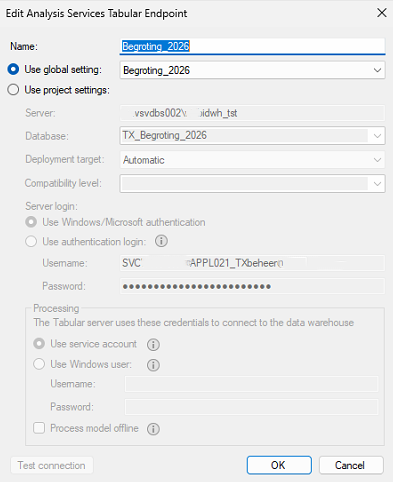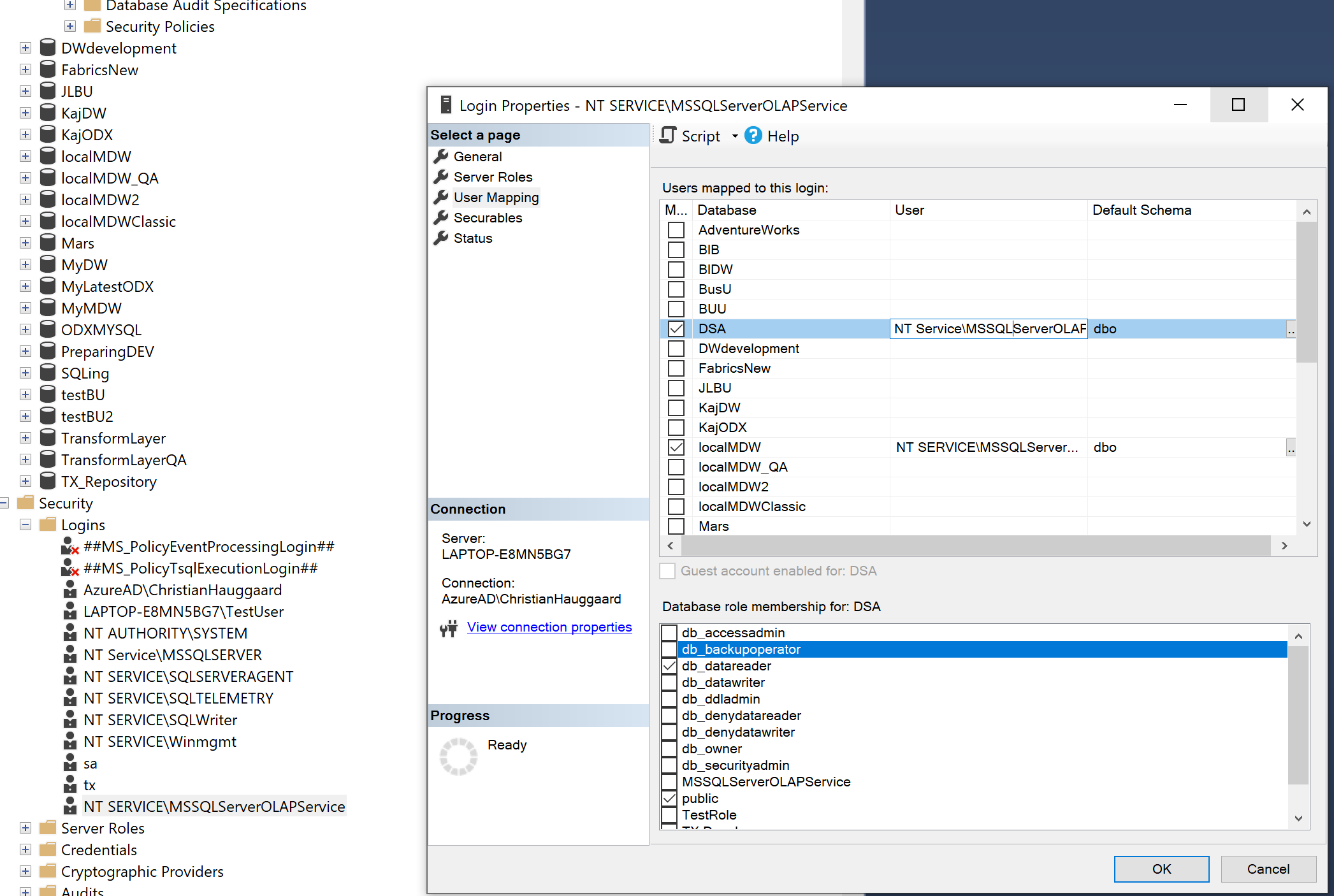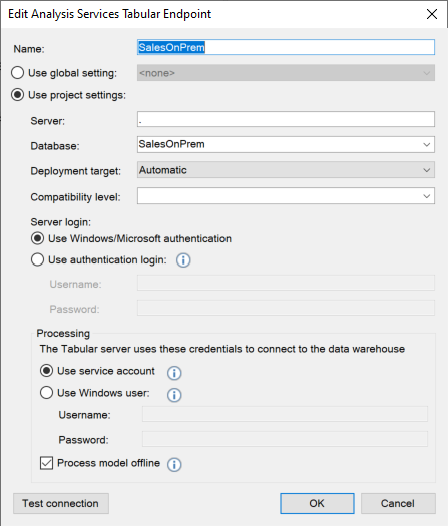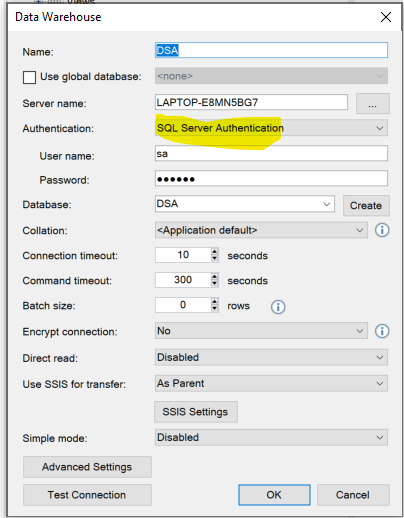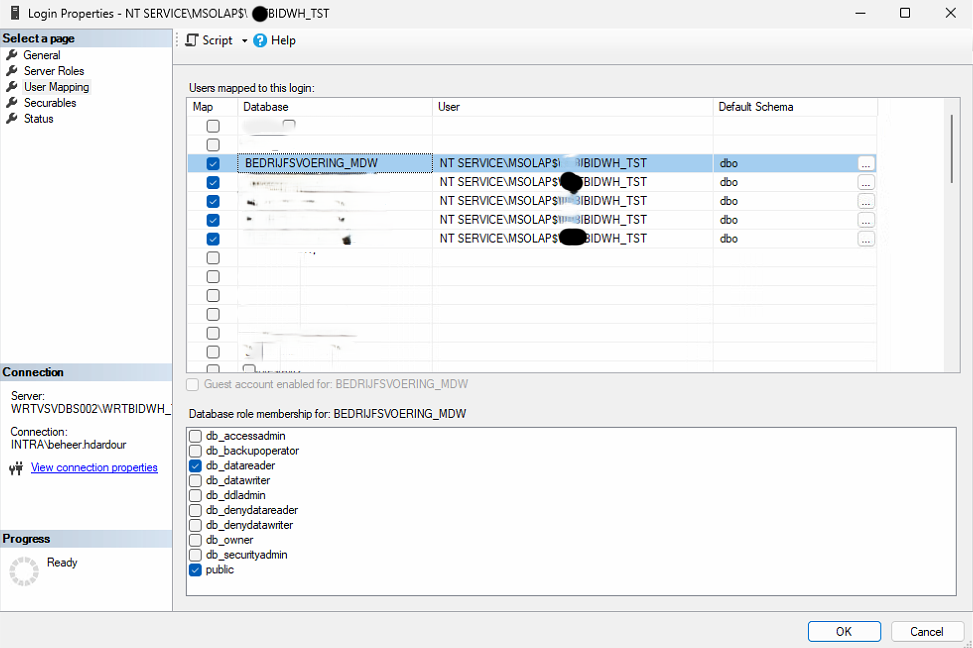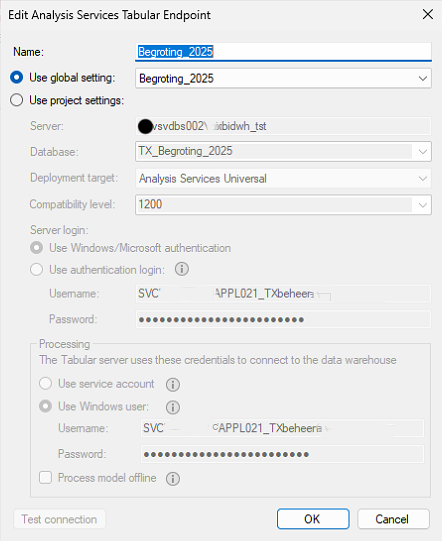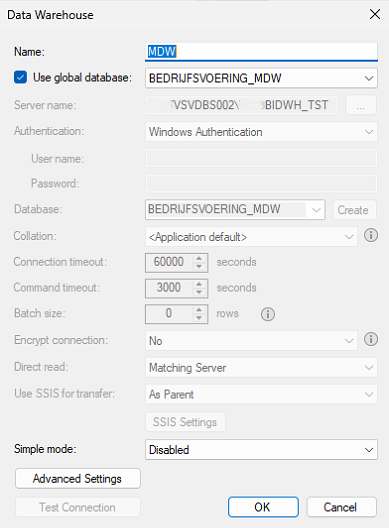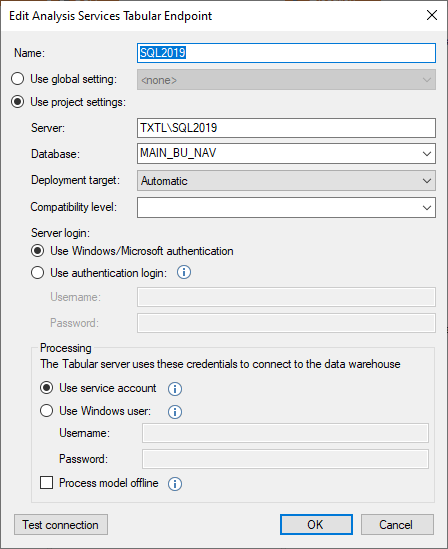Hi!
This week I have been trying to upgrade a client of ours to TX 20.10.66.64 and in this process we have come quite far. We are able to deploy & execute all layers in a project, except for the Semantic layer.
The error message TX shows us is below:

The account that is mentioned in the parts that I have blurred out is an account that has never existed, nor is mentioned in any connection in the project.
The databases used in this semantic layer are all on a SQL server that worked correctly before the upgrade of TX. Note: TX was not only upgraded, but also installed on a different application server.
Created a new endpoint in the existing semantic layer, when trying to deploy and execute this, same error message appeared.
Deploy steps all succeeded, it fails on the execution step.
Has someone seen this error message or experienced this before?



